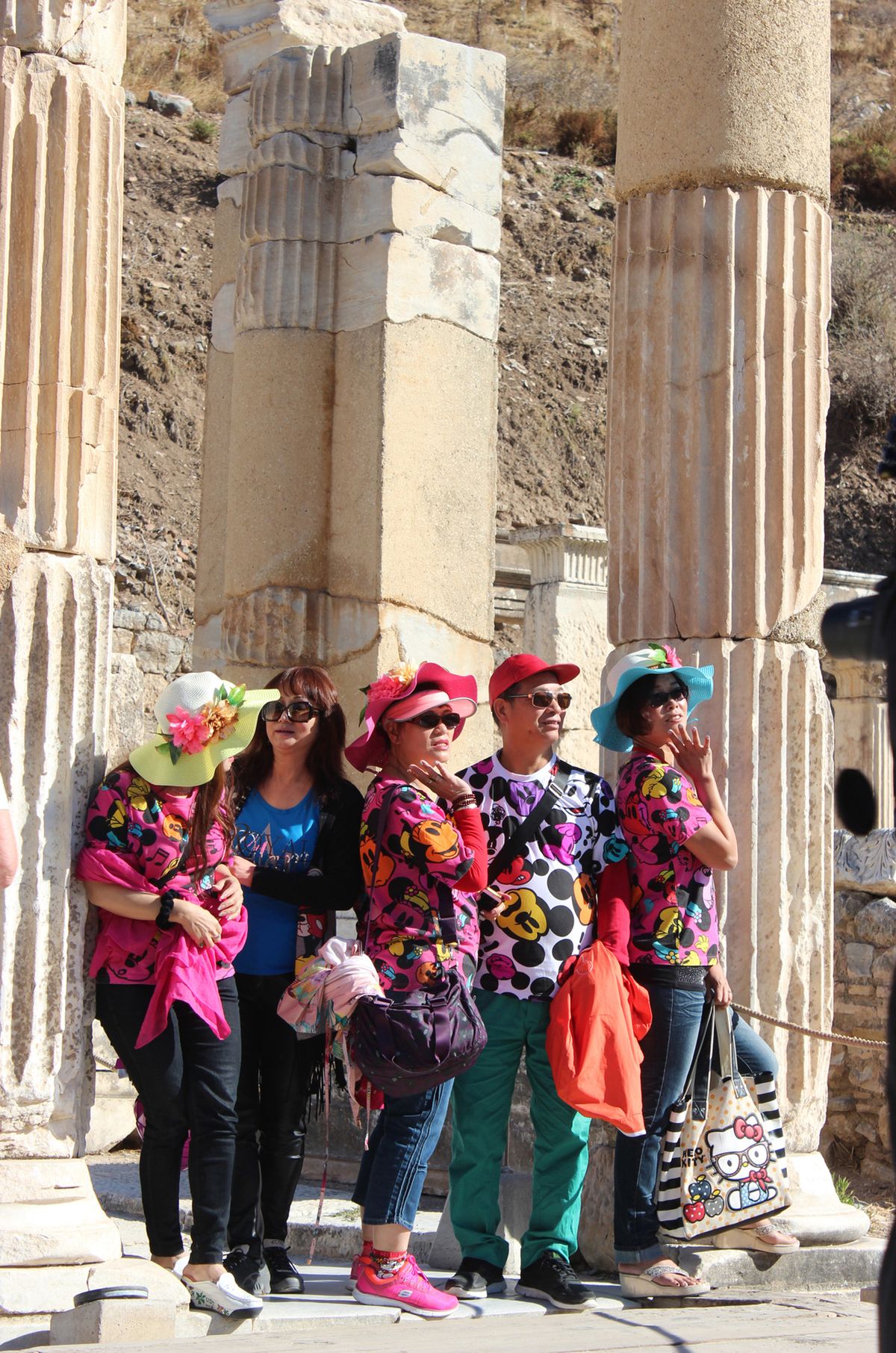Bus ride reveals Turkey’s delights

CAPPADOCIA, Turkey – If all of Turkish history were on this bus, I’d be sitting next to sultans, whirling dervishes, Silk Road caravanners, Greek shopkeepers, apostles and olive growers.
Instead, I’m sitting next to a guy from New York and a couple from Toronto. We’re coming up on a bathroom break at a rest stop in central Turkey.
“Fifteen minutes!” our guide says as the bus doors swing open. “Do not be late.”
I join the crowd hurrying to the ladies’ room, passing shopkeepers’ shelves of merchandise – ooh, look at those cute tapestry bags and fresh pistachios! – amazingly similar to the wares at other stops. At least five other giant tour buses are here, dislodging their dozens of tourists, same as ours. Drivers grab a quick tea break or a smoke. Tourists stretch their legs, knowing there are many miles to go before tonight’s hotel.
Then it’s back on the bus. More of Turkey to see.
Bargain tour and trade-offs
I will be the first to admit that traveling with 42 people for 13 days in a giant bus (the preferred term is “motor coach”) with a Turkish guide is not the most relaxing way to go.
But it is efficient. And cheap. And surprisingly comprehensive.
Turkey is full of these bus tours, with a circuit every week of comfortable vehicles trundling from swirling Istanbul to the magnificent Greco-Roman ruins of Ephesus, to the natural wonders of Pamukkale, the beach city of Antalya and the artists’ enclave of Cappadocia.
What everyone on the bus has in common is this: a desire to see Turkey inexpensively. I chose a trip called “Essential Turkey” for $1,900 through the company Gate 1. It included Turkey’s main attractions plus nice hotels, tours, most meals, flights from the U.S. and one flight within the country. We even stopped in a village to have lunch with local people – a surprise perk for such a large group.
The trade-off? Certain things must be expected. A rigid schedule. Lines for meals. Lines for the bathroom. Lines for your hotel key. Guides with little flags to make sure you don’t get lost. At least a couple complainers in the group. Buffet food.
Still, the logistics mean that you can see all of Turkey’s highlights in a very short time.
Although Turkey has been in the news lately because of war raging just over the border in Syria, the U.S. State Department has posted no travel alert or warning for Turkey.
Honestly? The most dangerous thing our tour group experienced was the lure of the souvenir stands and rug weavers.
Ruins and pretty pools
Generally speaking, Turkey has five must-see-before-you-die sights. They are scattered across western and central Turkey, with a lot of miles between them.
• Istanbul’s old city: You hear people rave about this historic city. They are not exaggerating. Topkapi Palace, where Ottoman sultans and their harems lived until 1853, is a sensual spot perched on a cliffside. Nearby, the towering Hagia Sophia museum (once a cathedral, then a mosque) dwarfs all mankind. Next door to that, the Blue Mosque is every square inch a piece of art, blue mosaic tiles on every surface.
• Troy: You’ve heard of Helen of Troy, right? Or, certainly you’ve heard of the Trojan horse - the gift from the Greeks to the Trojans to end a war, except the Greeks were hiding inside and sprang out to conquer their enemies. This place in western Turkey is believed to be where Troy existed 4,000 years ago. A botched 19th-century archaeological expedition has left this place a bit torn up, but there is a dandy “replica” wooden Trojan horse to climb at the entrance.
• Ephesus: This highbrow, beautiful city dating from the 1st century is beloved by tourists and known for its early Christian converts (the apostle John lived here, and some believe Jesus’ mother, Mary, also). You can still view Ephesus’ cobblestone main street, the facade of its massive library and its stadium to get a glimpse of everyday life 1,000 years ago. The city’s now-vanished Temple of Artemis was one of the seven wonders of the ancient world.
• Pamukkale: My personal highlight. Fantastic natural hot springs site where mineral pools spread calcium carbonate on rocky cliffs, turning it into what looks like puffy cotton - and transmuting it into elegant travertine limestone.
• Cappadocia: The Sedona of Turkey, it’s full of unworldly rocky spires, rock formations where ancient people made their homes and churches. Today, it’s home to artists, rug makers and balloonists. In the still of a morning when hot air balloons drift above this ancient, funky town, it’s quite a sight.
Surprise on Silk Road
Yes, I reached all of these places on a claustrophobic giant bus with 42 companions. It was completely opposite of the way I usually travel. Yet when I think back on it, I don’t remember the miles, but the moments: the wood-smoke smell of Cappadocia at night, the sharp scent of roasted chestnuts in Istanbul’s old city, the softness of Pamukkale’s white cottony surface on my feet.
One other highlight? The lesser-known, mysterious Caravanserai of Sultanhan. It is an ancient caravan inn along the Silk Road in central Turkey. The 13th century equivalent of the Holiday Inn still has its original soaring wood door, intricate carving and a nave with thick walls. Travelers of old spent the nights there with their animals and worldly goods while journeying the Silk Road.
Yes, there were dangers on the way, and exotic surprises and too much togetherness and likely hardships. But just like today, the trip was worth it.